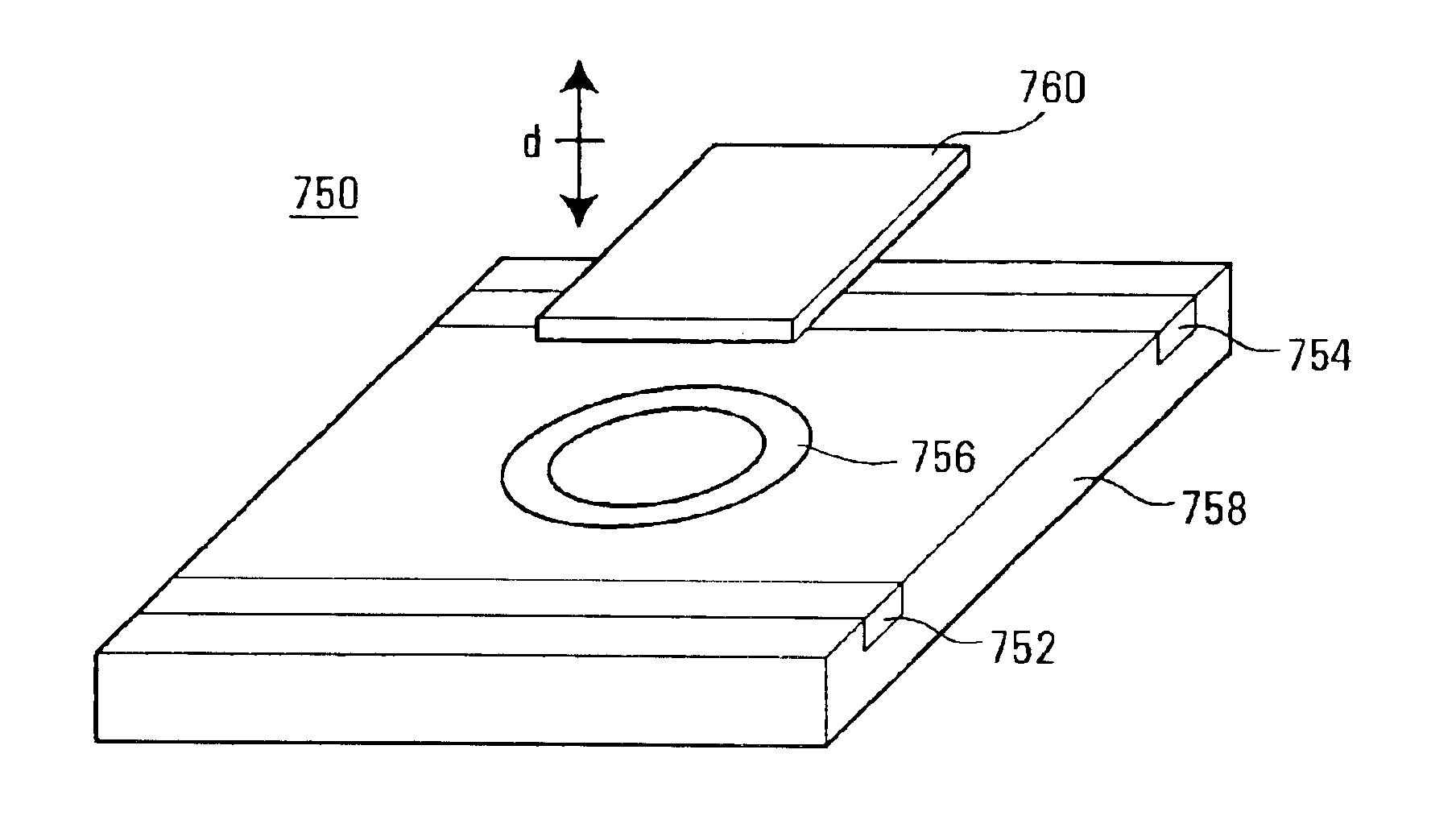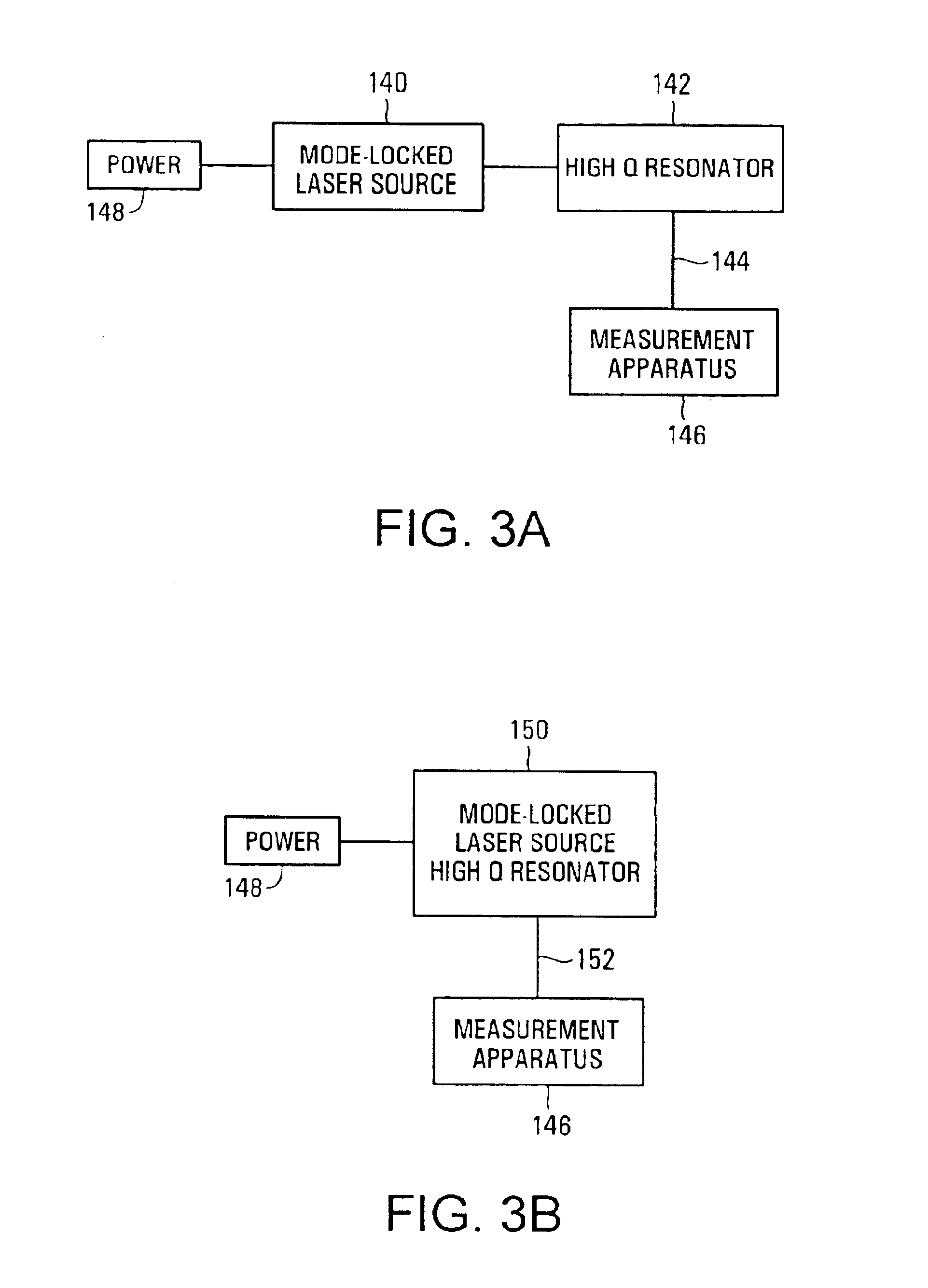Tunable optical filter
a filter and optical technology, applied in the field of optical filters, can solve the problems of large frequency noise, unsatisfactory solutions, and inability to control the peak frequency of laser output energy,
- Summary
- Abstract
- Description
- Claims
- Application Information
AI Technical Summary
Benefits of technology
Problems solved by technology
Method used
Image
Examples
Embodiment Construction
[0052]Below are described various apparatuses and methods that may be used to form an optical sensor. Generally, some embodiments provide lasers, preferably operating in a pulsed output mode, that produce a laser signal of a repetition rate or frequency that is modulated by a measurable parameter. By using a mode locked laser, conventional high-speed electronics can be used to measure the modulated laser signal, and the repetition rate or frequency of the laser signal can be measured with high resolution. By measuring the frequency of the laser signal, a value for the measurable parameter can be derived.
[0053]In some embodiments, a high Q optical resonator produces the laser signal with a frequency dependant upon the measurable parameter. The high Q resonator can be internal or external to the laser. The devices have lower power consumption and improved accuracy over the state of the art. The devices may be used to measure changes in a measurable parameter or they may be used to mak...
PUM
 Login to View More
Login to View More Abstract
Description
Claims
Application Information
 Login to View More
Login to View More - R&D
- Intellectual Property
- Life Sciences
- Materials
- Tech Scout
- Unparalleled Data Quality
- Higher Quality Content
- 60% Fewer Hallucinations
Browse by: Latest US Patents, China's latest patents, Technical Efficacy Thesaurus, Application Domain, Technology Topic, Popular Technical Reports.
© 2025 PatSnap. All rights reserved.Legal|Privacy policy|Modern Slavery Act Transparency Statement|Sitemap|About US| Contact US: help@patsnap.com



